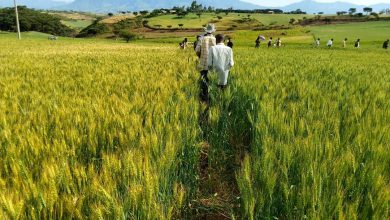
Addis Abeba, January 08/2020 – According to two joint government-humanitarian partners’ assessment report released on January 07 “both missions have witnessed a dire humanitarian situation with poor access to services and limited livelihoods,” in Tigray regional state. The report also revealed that “besides the looting of private properties, the mission also observed a massive damage and/or vandalization of public health centers and absence of health workers.”
The 10 pages report was filed based on the joint government-humanitarian partners’ field assessment mission who were deployed in Tigray as of December 20/2020.
Quoting the Tigray Emergency Coordination Center (ECC) meeting that convened on 1 January and discussed humanitarian needs based on assessment findings, the report said that “more than 4.5 million people in the region need emergency food assistance, including 2.2 million IDPs.”
But “only 77,000 people, mostly in Mekelle and its surroundings, and 25,000 refugees in two camps (Mai Ayni and Adi Harush) received food support from the UN and partners,” whereas access to most parts of north-western, eastern and central Tigray remains constrained “due to the ongoing insecurity and bureaucratic hurdles. Two of the four refugee camps in the region (Hitsats and Shimelba) are still not accessible.”

“According to both assessment missions, food supplies are very limited, and only locally produced food items are available and at increasing prices. Food, security, shelter, non-food-items, health, nutrition, and water, sanitation and hygiene are the priority needs identified,”
The concerns of widespread looting of private and government properties in the ongoing armed conflict in Tigray was one of the topics raised during community discussions between the residents of Mekelle, members of ENDF’s Northern Command, including its chief Maj. Gen. Belay Seyoum, and members of the federal appointed interim administration of Tigray region on December 25/2020.
Admitting to the existence of property looting Maj. Gen. Belay promised the audience that the looted properties “can’t go anywhere…especially if they are within us.” However, he cannot say the same about properties “taken by aliens.” It “is another matter, as I said before, it is another matter,” he said.
In December 21, a video posted by VRT NWS, a Belgian Public Broadcast Service whose crew became “the first to reach Tigray and witnessed empty towns and looted hospitals” showed footage of a devastated Suhul Hospital in Shire town. The few nurses who remained at the site the Belgian media crew that it “has largely been plundered by Eritrean soldiers.”
Without apportioning blames on who the responsible parties are in the destruction, the two joint government-inter-agencies’ needs assessment mission report confirmed that “many buildings, including schools, hospitals and administration offices, have been looted and damaged. Health facilities outside of major cities are non-functional and those in the major cities are partially working, with limited to no stock of supplies and absence of health workers,” and recommends “infrastructure needs to urgently be restored.”
The findings of the Southern Tigray mission says “life in Alamata, Mehoni and Mekelle is gradually returning to normalcy with the resumption of some basic services, including electricity and telecommunication” and adds that the majority of the displaced people have returned or are in the process of returning to their homes. “However, most of their belongings have been looted or destroyed.” Regional authorities estimate that at least 90,000 people have been displaced due to the conflict, the report said .
COVID-19 community transmission
The report expressed concerns that “the interruption of COVID-19 surveillance and control activities in the region, coupled with mass displacements and overcrowded conditions in displacement setting, is feared to have facilitated massive community transmission.”
Limited prevention activities have started, including the distribution of 1200 COVID-19 prevention and hygiene promotion leaflets and personal protective materials, provision of health education and organization of a sanitation campaign in displacement sites in Shire. Additional COVID-19 specific responses are planned by partners.
“We continue to engage with the Government for the unrestricted and safe passage of humanitarian personnel and supplies to all parts of Tigray region,” the report said. AS

 Blinken urges political dialogue amid rising violence in Ethiopia’s Amhara region, reaffirms US support for Pretoria Agreement
Blinken urges political dialogue amid rising violence in Ethiopia’s Amhara region, reaffirms US support for Pretoria Agreement Unseasonal rains threaten crop yields in Ethiopia’s Oromia, Amhara regions; farmers report crop losses
Unseasonal rains threaten crop yields in Ethiopia’s Oromia, Amhara regions; farmers report crop losses